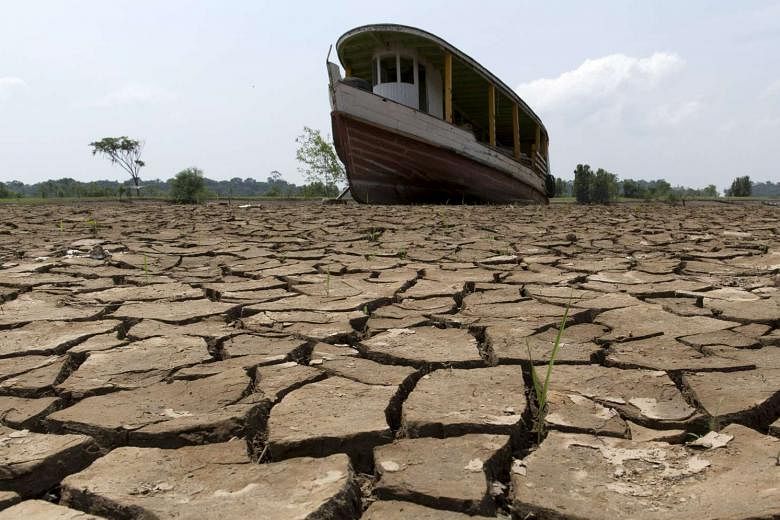TORONTO (Thomson Reuters Foundation) - New satellite data shows Brazil's drought is worse than previously thought, with the southeast losing 56 trillion litres of water in each of the past three years - more than enough to fill Lake Tahoe, a Nasa scientist said on Friday (Oct 30).
The country's most severe drought in 35 years has also caused the Brazil's larger and less-populated northeast to lose 49 trillion litres of water each year over three years compared with normal levels, said Nasa hydrologist Augusto Getirana.
Brazilians are well aware of the drought due to water rationing, power blackouts and empty reservoirs in parts of the country but this is the first study to document exactly how much water has disappeared from aquifers and reservoirs, Getirana said.
"It is much larger than I imagined," Getirana told the Thomson Reuters Foundation. "With climate change, this is going to happen more and more often."
The Cantareira water reservoir system providing water for 8.8 million residents of Sao Paulo, Brazil's largest city, for example, was filled to less than 11 per cent of its capacity last year, local officials reported.
Getirana's research, published this week in the Journal of Hydrometeorology, relies on 13 years of data from Nasa's Gravity Recovery and Climate Experiment (GRACE) satellites which circle the earth detecting changes in the gravity field caused by movements of water on the planet.
Home to the Amazon River, Brazil does not have an absolute shortage of water, he said. The problem is that heavily populated regions, particularly the country's southeast, depend on local reservoirs and aquifers which are not being replenished due to the drought.
Water could theoretically be shipped into drought-affected cities from other parts of the country, he said, but the financial and logistical costs would be huge.
The new satellite information should be a wake-up call for politicians to better manage water resources, and tackle climate change to address the crisis, Getirana said.
The data does not allow researchers to make predictions on how long the drought will last, he said, adding that water levels have continued to decline in recent months.

